What are the main biomes of the world? Information about the major biomes on earth and their characteristics.
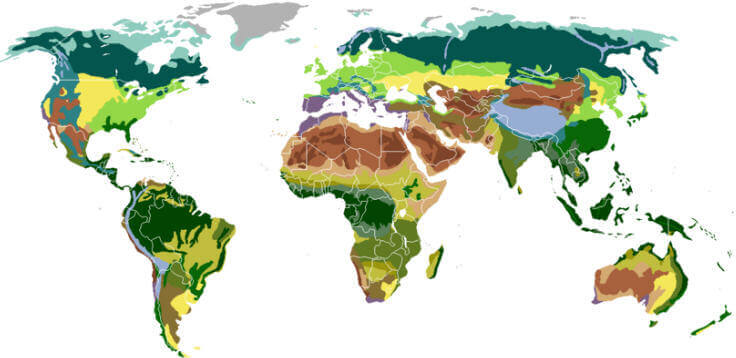
TUNDRA
Tundra lies between the farthest limit of trees and the region of snow or ice, frozen ground, and low temperatures; it also occurs above the timberline in high mountains (alpine tundra). The tundra is perhaps the most dynamic and extreme of all biomes having enormous seasonal and daily variations of microclimate, and consequently much frost action in the soil. The vegetation is low, dwarfed, and often matlike, and includes a large proportion of grasses and sedges.
In the alpine tundra, the summer sunshine is intense and rich in ultraviolet, the winds are prevalent, and the precipitation highly variable; during the remainder of the year, precipitation is mainly snow with the snow accumulation patterns strongly affecting the vegetation pattern.
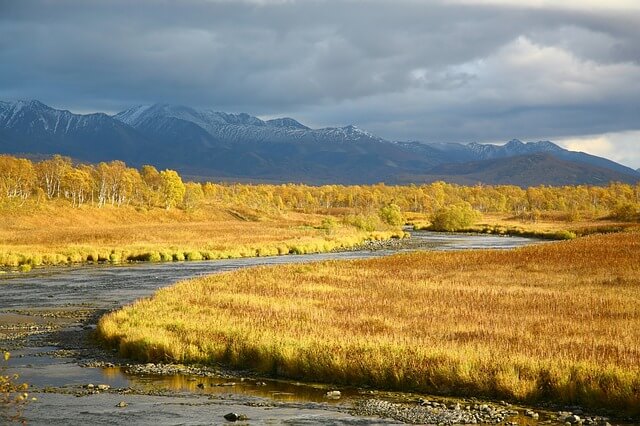
In the Arctic and Antarctic, the growing season is short, and summer light is continuous. Total snowfall is low, but the surface is snow-covered most of the winter. The arctic vegetation surface is characterized by a mosaic of polygonal patterns formed as a result of massive vertical ice wedges going down into the ground. In the arctic tundra many animals remain active throughout the year, including caribou (reindeer in Eurasia), musk ox, arctic hare, arctic fox, arctic owl, lemming, ptarmigan, and others. Dipterous insects and their larvae play an especially important role as grass consumers in the Arctic. The total number of plant and animal species is relatively very low in the Arctic, the number of migratory birds that visit the Arctic during the short summer is quite large.
NORTHERN CONIFEROUS FOREST
The northern coniferous or boreal forests are the evergreen trees stretching in broad belts across North America and Eurasia just south of the tundra. Evidence seems to indicate that the northern border of the boreal forest coincides with the southern boundary of arctic air mass trajectories during the summer months. The northern coniferous climax forest is characterized by spruces, firs, pines, and in places by tamarack and hemlock. The climate of the region is only slightly less severe than that of the alpine tundra. Following fires, plant succession goes from grasses to bracken fern to blueberry and to stands of aspen and birch. Lakes and bogs are abundant in the coniferous forest biome and represent unique ecosystems within themselves.
In contrast to the tundra, the primary productivity of the evergreen forest is high and therefore it is one of the great lumber producing regions of the world. Along the west coast of North America in the vicinity of Puget Sound, the northern coniferous forest has high precipitation, greatly enhanced by fog, and here we find western hemlock, western arborvitae, grand fir, and Douglas fir.
Because of the high humidity, évapotranspiration from the forest is low and growth is abundant, provided sufficient sunlight is available. South along the coast into California, redwood forests predominate; and north along the coast of Canada and Alaska, Sitka spruce is common.
Animals of the northern coniferous biome include moose, deer, bear, snowshoe hare, lynx, bobcat, squirrels, chipmunks, moles, shrews, grouse, chickadees, siskins, crossbills, woodpeckers, warblers, and migratory birds. Some of the animals eat the broad-leaved shrubs and herbs of the forest floor, while others depend on conifer seeds for food.
TEMPERATE DECIDUOUS FOREST
Temperate deciduous forest biome occupies a region of more moderate climate. It is a region of abundant evenly distributed rainfall with warm summers and cold winters. Because the leaves fall from the trees in the autumn, the understory of the deciduous forest has a complex flora that flowers and fruits in the spring and has a well-developed herb and shrub layer.
The deciduous forest of North America has many important subdivisions, such as the beech-maple of the north central region, the beech-basswood of Wisconsin and Minnesota, the oak-hickory of the central and southern regions, and a mixed deciduous forest type of the Appalachian mountains. Between the northern coniferous forest and the temperate deciduous forest there are many regions of mixed vegetation where usually the local edaphic (soil type) situation determines the climax community type. Animals in this forest include deer, bear, squirrel, fox, bobcat, and many birds such as the vireo, wood thrush, tufted titmouse, ovenbird, woodpeckers, and warblers.
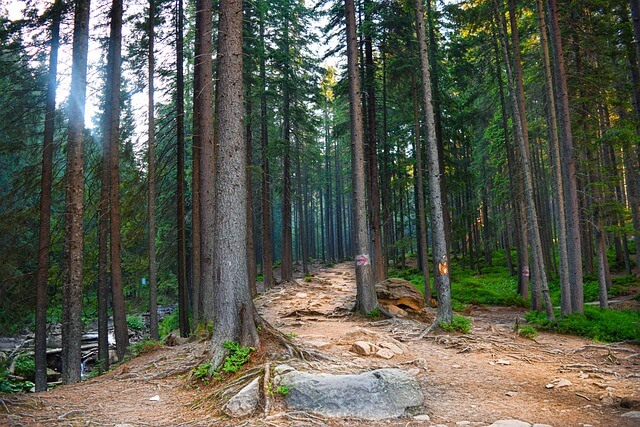
Source: pixabay.com
EVERGREEN FOREST
The broad-leaved evergreen forest takes over to the south of the temperate deciduous forest. Rainfall is abundant in this area, and temperatures are warmer in the winter than they are farther north. Plants that dominate the evergreen forest, which in North America is limited primarily to Florida and sections along the Gulf and Atlantic coasts, are live oaks, magnolias, bays, hollies, figs, palms, vines, and epiphytes (plants that take moisture and nutrients from the air and rain and I usually grow on other plants ). Although some of the plants are related to tropical species, none of the birds or mammals found in the region are tropical in origin, indicating that Florida has not had an easy land bridge to the south.
TEMPERATE GRASSLAND
The temperate grassland covers a vast area of the I central portion of the United States and Canada, Uruguay, Argentina, and the steppes of Russia. It is a region of persistent wind and moderate to low precipitation —30 to 10 inches (75—25 cm) per year. In this respect, the grasslands do not differ so much from the cold tundra which also has low precipitation and frozen soil limiting available moisture. The grassland biome is divided into areas of tall grass, mixed grass, short grass, and bunch-grass prairies, depending on the amount of rainfall. The grasslands often become very dry during the summer and autumn, and some of the grasses have roots that penetrate the soil 6 feet (1.8 meters) or more seeking moisture.
Some of the grasses, such as big bluestem, buffalo grass, and wheatgrass have a network of rhizomes that help bind the soil. Little bluestem, June grass, and needlegrass grow in clumps. The various grasses compete with one another by growing at different times of the spring, summer, or autumn. Needlegrass, wheatgrass, and bluegrass grow early in the spring and set seed in early summer, become semidormant during hot weather, but resume growing during autumn. The bluestems, buffalo grass, and grama grass grow throughout the summer. True indicators of the grassland biome are some of the forbs, such as thistle, tumbleweed, and sunflower.
The animals of the grasslands are either of the running and clustering type, such as the buffalo or antelope, or of the burrowing type, such as ground squirrels, prairie dogs, and gophers. Birds of the North American grassland are prairie chickens, meadowlarks, longspurs, horned larks, and rodent-eating hawks.
Many animals, including birds, not naturally found in the high plains grasslands of western Kansas and eastern Colorado are now found there because of man’s activities. Opossum, raccoon, cardinal, and others find it easy to move from grainfield to grainfield and from farm pond to farm pond and hence to span the “great American desert” as the high plains of North America were once called.
SAVANNA
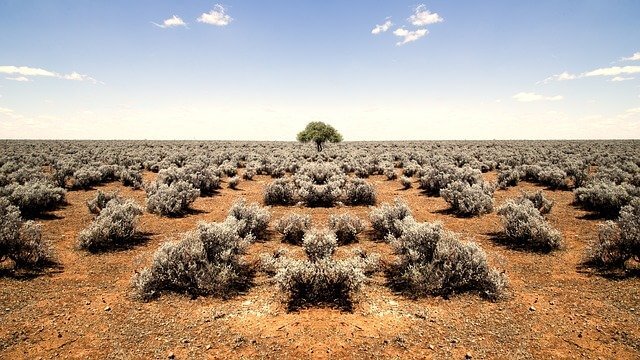
The tropical savanna is a grassland of warm regions with annual rainfall 40 to 60 inches (1.0—1.5 meters) and a pronounced dry season when fires are frequent. The fires are an important factor in maintaining the savanna in grass; they burn the shrubs, thus returning nutrients to the soil and giving the grasses more light. (Fire may also have played a more significant role in the maintenance of the North American grasslands than many people suspect.) The scattered trees of the African savanna are acacias, baobab trees, euphorbias, and palms. The giraffe with its long neck, has evolved to feed on these tall trees and thereby not compete with the antelope, wildebeest, and zebra, which browse on the grasses of the region. Lions, hyenas, and other animals feed off grazing animals and top off the food chain in this ecosystem.
DESERT
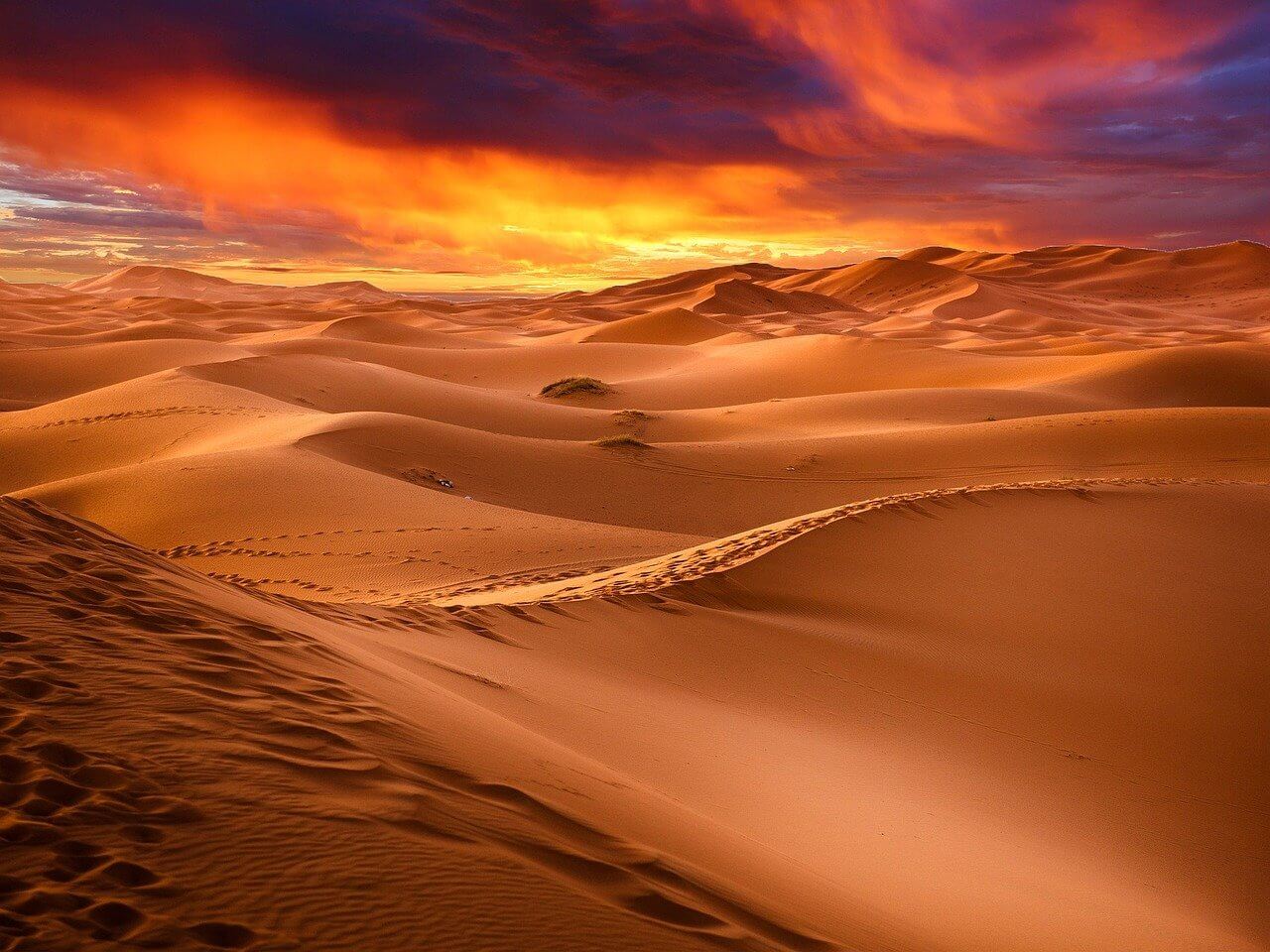
Source: pixabay.com
The deserts of the world generally occur where the annual rainfall is under 10 inches (25cm). Three types of plants are found in desert areas: annuals that are dormant during the driest season and grow during the wet season; succulents, such as cacti and euphorbias, that store water; and shrubs with small, thick leaves that may be shed during the dry season. Some of the plants of the American desert include the creosote bush, sagebrush, prickly pear, saguaro, and palo verde. Desert reptiles and insects are protected from excessive moisture loss by thick, impervious skin or by waxy surfaces. During midday heat, the desert reptiles most often stay in the shade of a plant, the rodents remain in burrows in the cooler ground, and the desert birds stay inside large saguaro.
CHAPARRAL
The chaparral is a zone of stunted trees and shrubs that often abuts the desert. It is a region of hot, dry summers. There is, however, adequate winter rainfall. Typical trees and shrubs of the region—chamiso and manzanita—have hard, thick evergreen leaves. Mule deer and many birds inhabit the chaparral during the wet season in addition to the wood rats, chipmunks, lizards, wrentits, and towhees found there dining all seasons.
TROPICAL RAIN FOREST
The tropical rain forest occupies low-lying areas near the equator where the annual rainfall exceeds 80 to 90 inches (2.0—2.3 meters). There are usually one or more dry periods, and if the dry periods are long, the evergreen forest becomes deciduous. The number of animal and plant species found in the tropical rain forest is probably greater than anywhere else in the world.
The trees are tall with many vines climbing their trunks and with vast numbers of epiphytes growing amid the vast canopy high above the ground. A large number of diverse species of animals live in the canopy. The dark interior of the rain forest, however, tends to be relatively open and with fewer animals. The trees have shallow roots; the rate of turnover of nutrients is rapid; and the rain forest has a high productivity.
Often, when the rain forest is replaced by cultivated fields, the productivity drops, and the land deteriorates rapidly. The lateritic soil (reddish soils formed by rock decay and having a high content of iron oxides and aluminum hydroxides) typical of rain forests, leech out and become baked as hard as brick in the sun, and neither forest nor crops will grow.